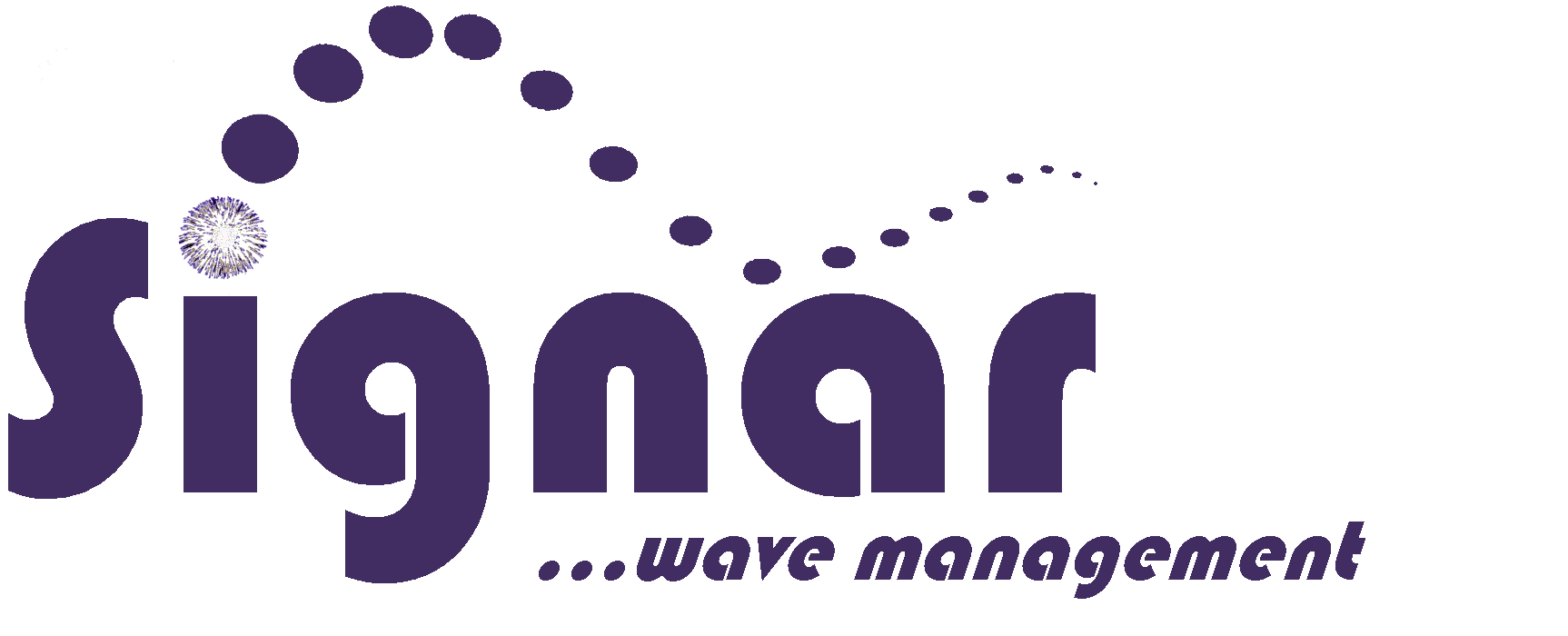“a more rigorous methodology [to] improve payback” and achieve an optimal balance between risk, cost, and reliability.
“Condition-based maintenance… professionals told me that they often find that their current CBM programs… don’t deliver the intended results. I asked how their staff interpreted condition monitoring data. In other words, how did they decide whether or not to remove an item for repair? Their answers led me to investigate whether a more rigorous decision methodology might improve the payback on the rather large investment they were making in condition-based maintenance.” — (Dr. Andrew K.S. Jardine)
EXAKT has two ways of deciding whether an item is in a “P” state. One, A decision based solely on failure probability and…
…Two, A decision based on a combination of failure probability and the quantifiable consequences of the failure (cost minimization, profitability maximization, and availability maximization)
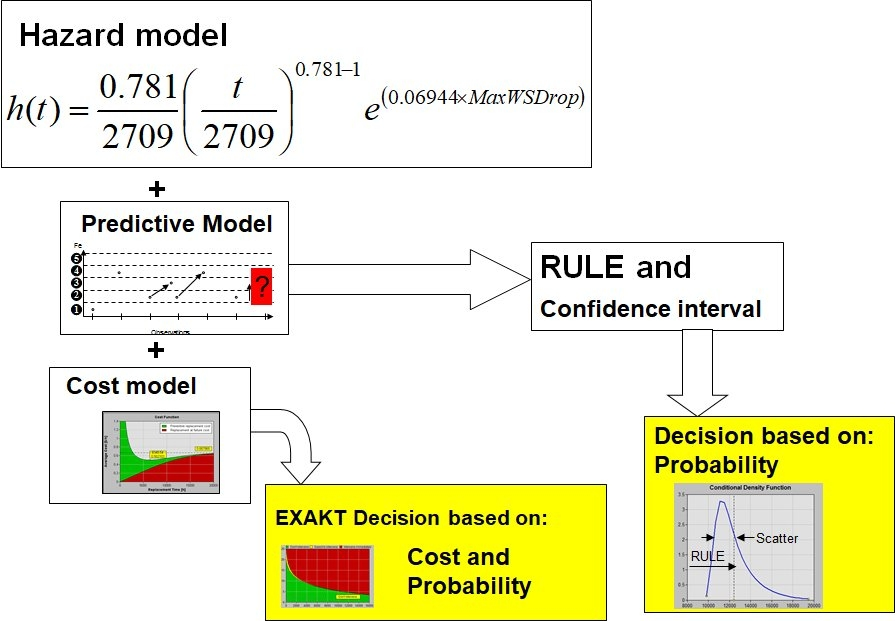
Don’t replace
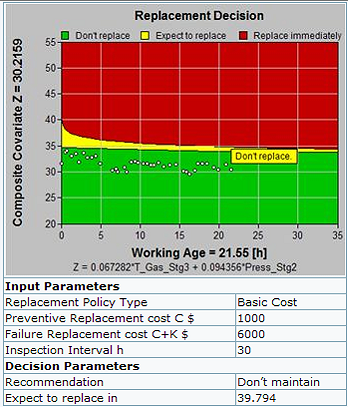
replace immediately
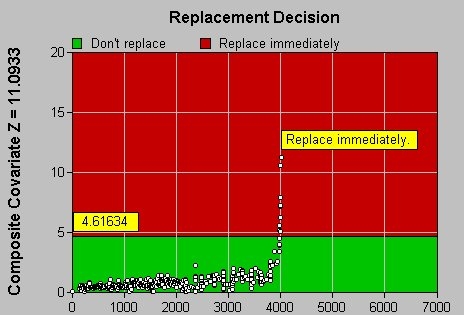
EXAKT displays calculated present and future probability of failure in combination with providing the optimal time (with respect to cost) to intervene.
replace in 1844 hours
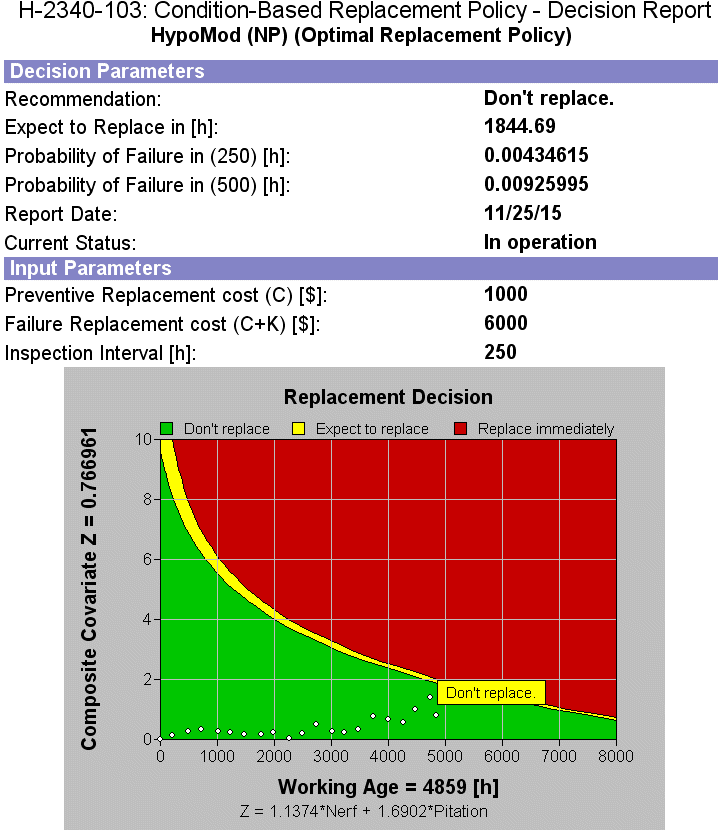
MAXIMIZE APM ROI AND PROPERLY ALIGN WITH STRATEGIC PLANNING AND CORPORATE RISK POLICY
“Condition-based maintenance… professionals told me that they often find that their current CBM programs… don’t deliver the intended results. I asked how their staff interpreted condition monitoring data. In other words, how did they decide whether or not to remove an item for repair? Their answers led me to investigate whether a more rigorous decision methodology might improve the payback on the rather large investment they were making in condition-based maintenance.” — (Dr. Andrew K.S. Jardine)
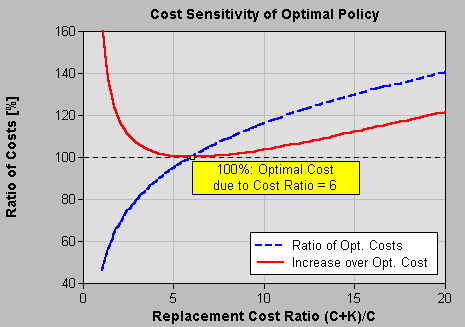
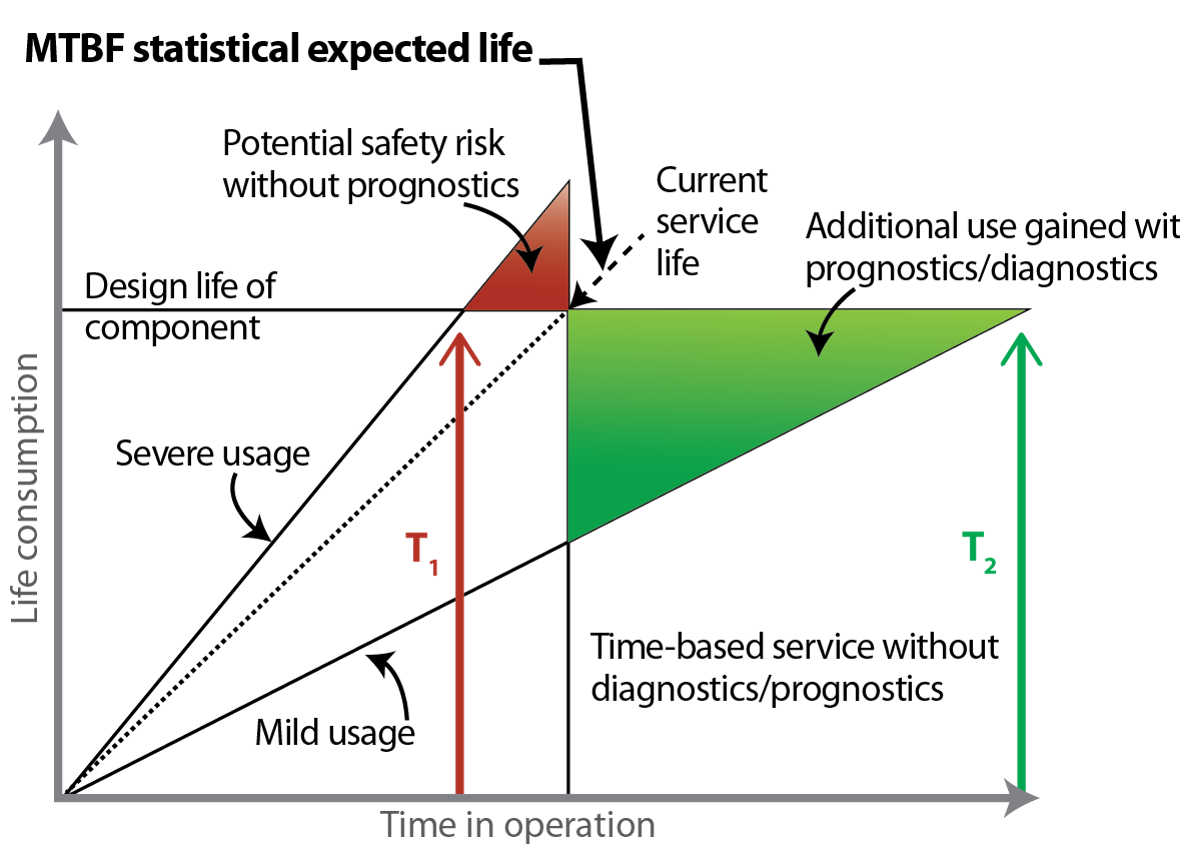
Benefits include:
- Maintenance urgency automatically determined by system.
- Required maintenance action automatically determined.
- Extended life and/or reduced equipment RUL waste.
- Reduced time-to-value of data collected.
EXAKT INTEGRATES YOUR MULTIVARIATE DATA TO CALCULATE RUL, PROBABILITY OF FAILURE, AND OPTIMAL TIMING OF REPAIR/REPLACE INTERVENTION
- Optimum % balance of preventive replacement and predictive or run-to-failure maintenance
- Cost impact related to current practice
- Statistical validity of alternative models
- Remaining useful life
- Expected time between replacements
- Traffic light graph with a current status trend line and
“Replace/Don’t Replace” conclusion.
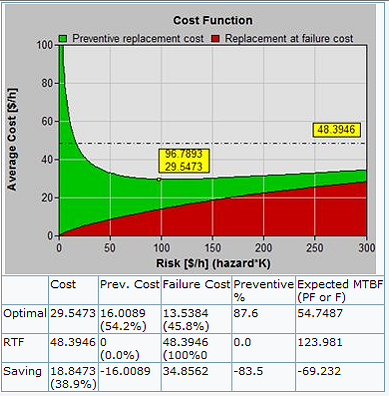

RESULTS OF VERY COMPLEX CALCULATIONS PRESENTED IN SIMPLE GRAPHICAL FORMAT
- Relates condition variables to failure modes with statistical confidence levels and thereby enables the company to stop collecting and analyzing low-impact data
- Gives the equipment maintainer or operator a high level of confidence that the equipment will not fail before the end of a required performance or production window
- Reduces maintenance costs by optimizing the blend of preventive and condition-based replacements or run-to-failure
- Provides for orderly replacement planning by predicting remaining useful life
- For complex equipment, increases the accuracy of failure prediction by operating at the component level
- Provides accurate and consistent prediction model for each piece of equipment.
